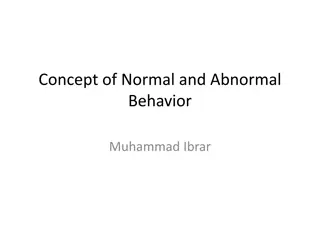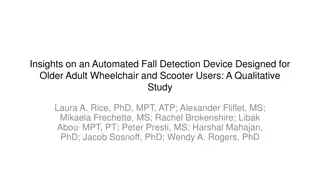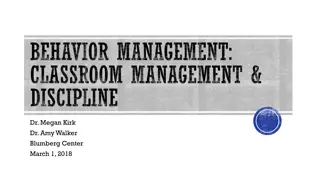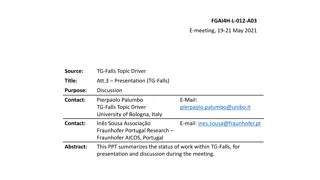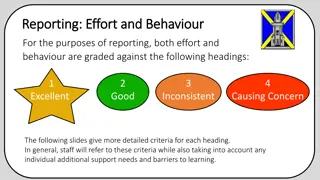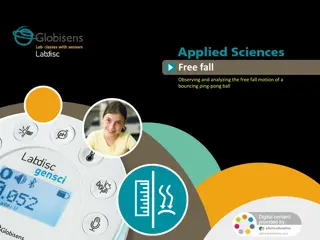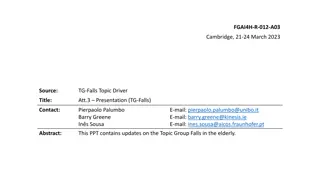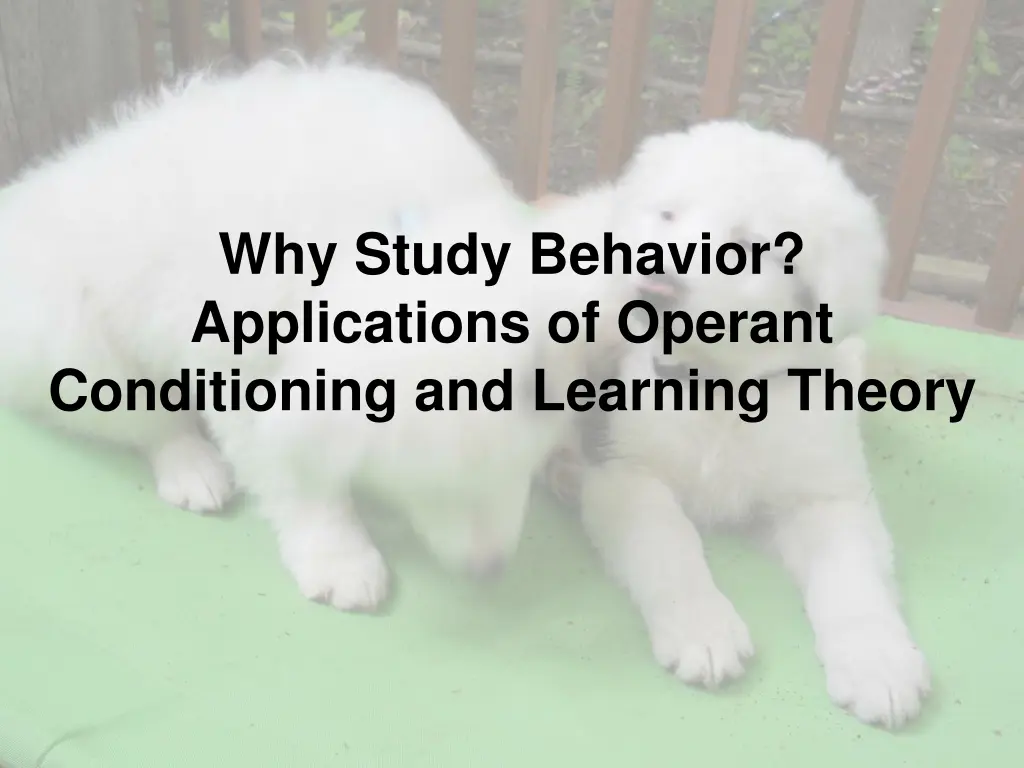
Applications of Operant Conditioning and Behavior Analysis
Explore the applications of operant conditioning and behavior analysis in various settings such as schools, industries, hospitals, and animal training. Learn how behavior analysts evaluate behavior, conduct functional analysis, and create behavioral programs. Discover the importance of using reward and punishment effectively, along with reinforcement procedures in applied settings like incidental teaching to promote positive behavior changes.
Download Presentation

Please find below an Image/Link to download the presentation.
The content on the website is provided AS IS for your information and personal use only. It may not be sold, licensed, or shared on other websites without obtaining consent from the author. If you encounter any issues during the download, it is possible that the publisher has removed the file from their server.
You are allowed to download the files provided on this website for personal or commercial use, subject to the condition that they are used lawfully. All files are the property of their respective owners.
The content on the website is provided AS IS for your information and personal use only. It may not be sold, licensed, or shared on other websites without obtaining consent from the author.
E N D
Presentation Transcript
Why Study Behavior? Applications of Operant Conditioning and Learning Theory
Applied Behavior Analysis Using behavioral approach in applied setting: Schools Institutions Industrial settings, hospitals, etc. Animal training Behavior Analysts are psychologists, teachers, speech pathologists, audiologists, etc. who are certified in behavior analysis
Applied Behavior Analysis What do they do? Evaluate the situation and figure out the ABCs of Behavior The Antecedants The Behavior The Consequences The ABC s of behavior Conduct a functional analysis Create a behavioral program to change the behavior Evaluate the program
Functional Analysis Determining the function of the behavior Trying to find what contingencies maintain the behavior Can be environmental Can be internal environmental effects Must listen or observe behavior to determine causes!
Using Reward and Punishment Important to tailor the program to the clients Not a one-size fits all Use the functional analysis to determine program Important ethical guidelines Make individual as successful as possible Make individual as independent as possible Reduce the reliance on outside sources of reinforcement and punishment
Effective Reinforcement Procedures in Applied Settings: Must be effective Must be able to predict a priori the: direction of behavior change magnitude of reinforcement effect Must be highly flexible across different populations and settings
Incidental Teaching Teaching method used to increase social/verbal behaviors in children, adolescents and adults with developmental disabilities (Farmer-Dougan, 1994; Hart and Risley, 1968, 1974, 1975). Focuses on accurately identifying reinforcers and increasing generalization and maintenance through use of naturalistic teaching Captures a teaching moment
Can Incidental Teaching elicit generalized behavior? 6 adult men with mental retardation and autism In a group home for young men with severe behavioral problems Problem behavior: Inappropriate behavior at meal times Grabbed food Shoved food in mouth No social interactions
Method 3 Pairs: higher functioning with lower functioning man Three most verbal paired with 3 least verbal Used lunch preparation as training time Dinnertime was used as generalization probes Lunch prep task: More verbal person given all items used in food prep When other client reached for item, was taught to withdraw item and prompt for nice asking If the low verbal client asked nicely , got the item By signing By single word By sentence
Method Several steps: Baseline Training of Peer Tutors Peer training Withdrawal of incidental teaching Reinstatement of incidental teaching An ABCAC design Generalization probes at dinner
Why important? Showed that peer delivered incidental teaching could be easily implemented and highly adaptable Focus on naturally occurring stimuli rather artificial situations and stimuli Highly appropriate for community-based programming Provided instruction in the context of natural, family-like activities Was more effective means of assessing what was reinforcing to the clients than traditional methods or even Premack.
Can also use for Animal Behavior Zoos: animal management, care and enrichment Animal Shelters: behavior testing, identification and remediation of behavior problems Even Pet owner consulting
Functional Analysis of Aggression in a Lemur: Teaching her NOT to bite!
Functional Analysis: Determine the Function of a (bad) Behavior Developed the Captive Animal Functional Analysis Checklist (CAFAC) This helps determine what is maintaining the behavior (reinforcing it) Examines several categories of contingencies Social reinforcement: attention from other animals or humans Escape from humans, other animals Social Dominance versus Submission Self-stimulation (automatic reinforcement)
FACA showed: Whacko s aggression maintained by: Social reinforcement Contact and interaction Protected the food bowl Social dominance Dominant over two males in enclosure Aggressive to male zookeeper
Replacement Behaviors Taught the lemur alternative responses: Sit on her station Show her paw Punished biting/ aggression water spray
Special Needs Dogs Shelter dogs Shelters are like prisons: devoid of positive stimuli and full of negative stimuli Dogs develop behavior problems such as Fear Avoidance of humans Poor social skills to humans and other dogs Separation anxiety and related issues Special needs dogs Deaf dogs Blind dogs How does loss of a sensory modality affect behavior?
Theories of Behavior Can examine different individuals and groups Look for similarities and differences Determine underlying similarities and differences Organisms learn in highly similar ways Biology does account for some differences
Training Service Dogs (And Shelter Dogs) Use operant and classical conditioning POSITIVE approach to training: Avoid the use of punishment Avoid the use of negative reinforcement No choke collars, shock collars, aversives, etc. Treat behavior problems via retraining and reconditioning
https://www.youtube.com/watch?v=sM70JwR_mGk&feature=youtu.be
Sometimes we learn more from the client than we teach Goal of behavior analysis is to listen to what the behavior is telling us. Can t have preconceived notions, but rather must be good observers. This is very important when dealing with unusual cases Here is the story of Doris Ann .
At 30 yrs old referred to a state special Inpatient Behavior Center because of her violent and aggressive behavior. This is Doris Ann She would Hit her head (notice the wound at her hair line) Bite and pinch others causing severe wounds. Bite and scratch herself, including pulling off her own skin on her arms and legs. Scream incessantly
My teams job: Doris Ann arrived in a helmet, arm and leg restraints and on a high dose of sedatives. Our job was to get her out of restraints off the medication remediate the aggressive behavior using behavioral analysis techniques. Conducted a functional analysis on the behavior Collected data in 5 minute bins Examined the data for patterns: what was reinforcing the behavior? What was setting off the behavior?
Functional Analysis indicated that: Aggression in 2 situations self aggression Demands by staff to follow a direction Self aggression occurred 30- 60 min. after meal/snack banging head; Scratching at stomach, legs, bottom Screamed loudly during these episodes Form of post-meal aggression Much more intense continued when we tried to interrupt
What is YOUR diagnosis: What is maintaining the self aggression? What is maintaining the aggression to others?
Diagnosis Pain was driving her inappropriate behavior she had developed around her own twin: fetus in fetu extra intestines, lobes of her liver, prolapsed colon, lactose intolerance Solution: Surgery to correct congenital defects Change in diet Teach an appropriate behavior to signal pain Teach social and vocational skills so she could be an active member of society Outcome: Moved into a group home Worked at a sheltered workshop and earned a paycheck Self injurious behaviors diminished to almost nothing
Lessons from Doris Ann Behavior talks and tells you the story. You must be willing and able to listen!!





